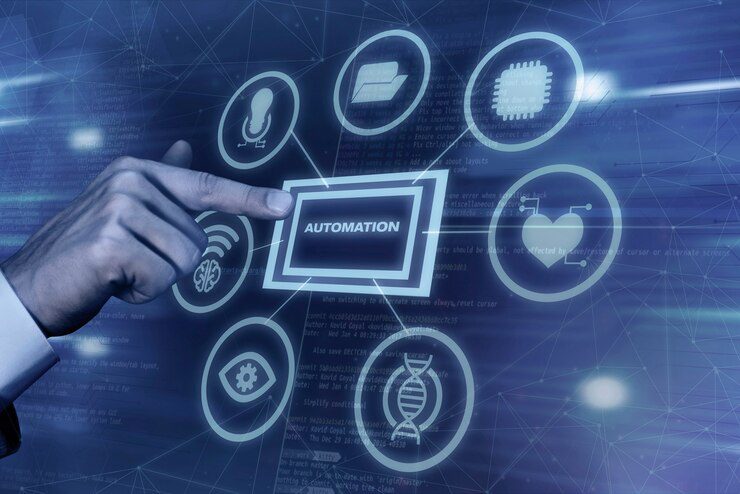Welcome to the era of automation, where machines are becoming smarter, more efficient, and increasingly integrated into our daily lives. From self-driving cars to virtual assistants, automation and artificial intelligence (AI) are reshaping industries, transforming workflows, and revolutionizing the way we live and work. In this blog, we’ll explore the benefits of embracing the rise of automation and AI, debunk common misconceptions, and discuss how individuals and businesses can adapt and thrive in this rapidly evolving landscape.
The Promise of Automation
Automation holds the promise of streamlining processes, reducing errors, and increasing productivity across various sectors. By automating repetitive tasks, businesses can free up valuable time and resources, allowing employees to focus on more creative and strategic endeavors. Moreover, automation enables greater precision and consistency, leading to improved quality and customer satisfaction.
AI: The Driving Force Behind Automation
At the heart of automation lies artificial intelligence, which enables machines to learn, adapt, and perform tasks that traditionally require human intervention. AI-powered algorithms analyze vast amounts of data, identify patterns, and make informed decisions in real time, driving efficiency and innovation across industries. From predictive analytics to natural language processing, AI is revolutionizing how businesses operate and provide AI-powered customer service.
Dispelling Myths and Misconceptions
Despite its numerous benefits, automation, and AI are often met with skepticism and fear of job displacement. However, studies have shown that automation typically leads to the creation of new jobs and the enhancement of existing roles rather than widespread unemployment. Moreover, automation can alleviate mundane tasks, allowing employees to focus on higher-value activities that require human creativity and critical thinking.
Embracing Change: Navigating the Future of Work
As automation continues to advance, individuals and businesses must adapt to stay relevant in the workforce. This requires a proactive approach to learning new skills, embracing technology, and fostering a culture of innovation with AI and machine learning applications. By investing in training programs and upskilling initiatives, organizations can equip their workforce with the tools and knowledge needed to thrive in an automated world.
Here are some reasons to embrace the Age of Automation:
Boosting Productivity: Automation can streamline processes, leading to increased efficiency and productivity across various industries. Think of faster deliveries, quicker diagnoses, and smoother production lines.
Enhanced Innovation: By automating repetitive tasks, we free up resources and brainpower to focus on innovation and creativity. Imagine the possibilities when we have more time to develop new ideas, explore uncharted territories, and push the boundaries of progress.
Improved Safety: Automation can take over dangerous or risky tasks, protecting human workers from accidents and injuries. Robots can handle hazardous materials in factories, while self-driving cars can potentially reduce traffic accidents.
Personalized Experiences: AI can be used to personalize experiences in various sectors, from education and healthcare to marketing and entertainment. Imagine learning customized to your pace, healthcare tailored to your specific needs, or recommendations that feel like they were read from your mind!
The Role of Ethics and Responsibility
While automation brings tremendous opportunities, it also raises ethical and societal concerns, such as data privacy, algorithmic bias, and job displacement. Businesses need to prioritize ethical considerations and ensure that automation is deployed responsibly and inclusively. By promoting transparency, accountability, and diversity, we can build a more equitable and sustainable future powered by automation and AI.
Here’s the good news: the future is not set in stone. We have the power to shape it through collective effort, responsible development, and a focus on human-centered solutions. By embracing automation and AI, we can unlock incredible possibilities:
- Focus on creativity and innovation. Let’s use our freed-up mental space to develop groundbreaking solutions, explore new frontiers, and push the boundaries of human potential.
- Prioritize reskilling and upskilling. Education doesn’t end with a diploma. Let’s create a culture of continuous learning and equip ourselves with the skills needed to thrive in the evolving job market.
- Advocate for ethical development. Let’s ensure that AI is developed and used responsibly, prioritizing transparency, fairness, and accountability in all aspects.
Conclusion
The age of automation represents a transformative period in human history, where technology is reshaping the way we live, work, and interact with the world around us. By embracing the rise of robotic process automation and AI, we can unlock new opportunities for innovation, efficiency, and growth. However, it’s crucial to approach automation with a balance of optimism and responsibility, prioritizing ethical considerations and ensuring that the benefits are shared equitably across society. Together, let’s embrace the future of automation and AI, harnessing their potential to create a brighter and more inclusive world for all.







